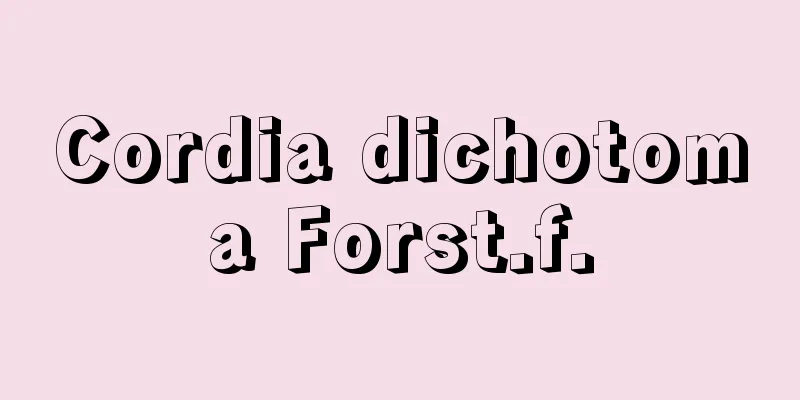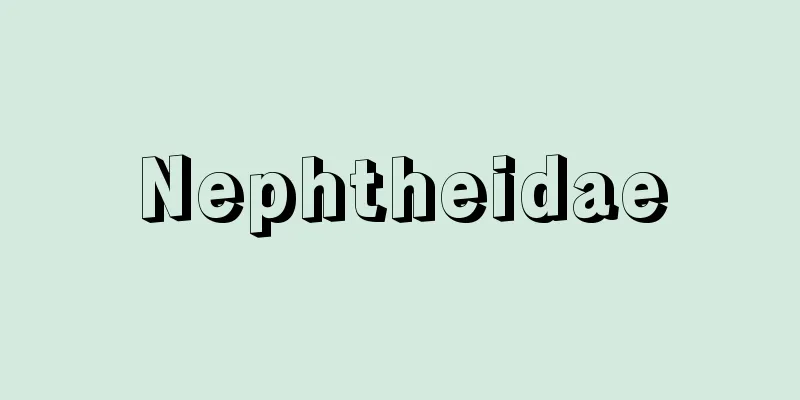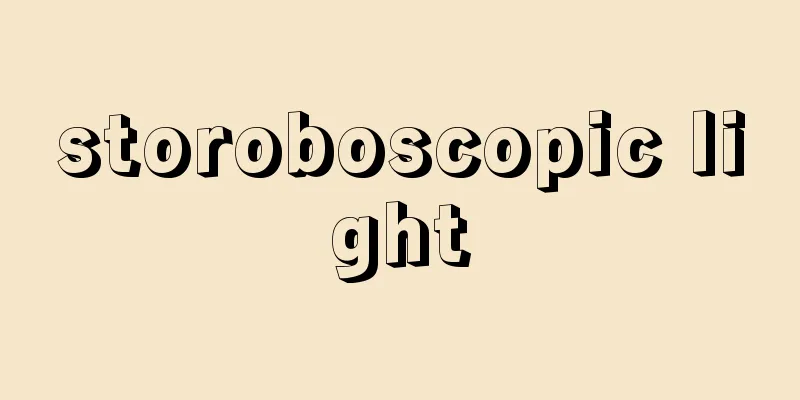Meteorite - Inseki (English spelling) meteorite

|
A general term for solid planetary material that has flown onto Earth from outside the Earth. Most of it comes from the asteroid belt located between Mars and Jupiter, and is the fragments of small celestial bodies that formed in the early solar system 4.55 billion years ago. However, some of it is thought to be the remains of comets, or surface material from Mars or the Moon that was scattered by some kind of impact. The size of meteorites ranges from a few grams for the smallest to 60 tons for the largest. When a large meteorite hits the Earth's surface, a meteorite crater is formed. There are 54 known meteorite craters on Earth, and the most famous is the one in the desert of Arizona, USA. This crater is 1,295 meters in diameter and 174 meters deep, and is estimated to have been formed by a meteorite of about 10,000 tons colliding at supersonic speed. However, most of it evaporated, and only a few kilograms of meteorite were recovered from the area around the crater. At the bottom of this crater, high-pressure silica minerals, which had already been artificially synthesized, were discovered in nature for the first time. The shock waves generated by the impact transformed quartz grains on the Earth's surface into high-pressure minerals called coesite and stishovite. According to the meteorite catalogue published by the British Museum, by the 1960s, 2,045 meteorites were known to exist in the world. In the 1970s, Japan's National Institute of Polar Research began systematically searching for meteorites in the Antarctic and recovered many meteorites, resulting in the storage of over 16,000 meteorites at the National Institute of Polar Research's Antarctic Meteorite Center. In addition to Japan, the United States and China also have many meteorites in their collections. There are three types of meteorites: iron meteorites, stony-iron meteorites, and stony meteorites. Iron meteorites are made of iron-nickel alloys. Stony-iron meteorites contain roughly equal amounts of iron-nickel alloys and silicate minerals. Stony meteorites are composed mainly of silicate minerals. Based on their internal structure, stony meteorites are further divided into two groups: those that contain millimeter-sized silicate droplets called chondrules are called chondrites, and those that do not are called achondrites. Achondrites are meteorites that are similar to igneous rocks on Earth. However, the chondrules that characterize chondrites do not exist in terrestrial rocks. A major difference between meteorites and rocks on Earth is the presence or absence of metallic iron. Rocks on Earth contain almost no metallic iron, but meteorites that do not contain metallic iron are rare. Compared to rocks on Earth, meteorites were formed in a fairly reducing environment. Incidentally, there is a theory that it was due to the existence of meteorites that humans became aware of the usefulness of metallic iron. Furthermore, the recognition that the Earth's core is made of metallic iron is largely due to the existence of meteorites. When considering the origin of meteorites, which are classified into iron meteorites, stony-iron meteorites, achondrites, and chondrites based on their chemical composition, it is clearer to divide them into two groups: chondrites and other meteorites. The chemical composition of chondrites is very similar to that of the solar atmosphere. Since the sun accounts for more than 99% of the material that makes up the solar system, chondrites can be said to be the primitive solid material that represents the entire solar system. On the other hand, the chemical composition of iron meteorites, stony-iron meteorites, and achondrites is significantly different from that of the solar atmosphere, and their structures show characteristics that arise when molten material solidifies. Therefore, chondrites are called primitive meteorites, and the other meteorites are collectively called differentiated meteorites. The differentiated meteorite group was formed when a primordial meteorite melted and differentiated. The parent body was a small celestial body several hundred kilometers in diameter with a layered structure similar to that of the Earth. The iron meteorites would have occupied the core of the asteroid, the stony-iron meteorites the boundary between the core and mantle, and the achondrites the mantle and shell. Another feature that distinguishes between primitive and differentiated meteorites is their frequency of fall. The meteorites that fall to Earth are overwhelmingly chondrites, and the frequency of fall of differentiated meteorites combined is less than 15%. There are many chondritic small celestial bodies in the asteroid belt, and the number of differentiated meteorite-like small celestial bodies is small. The group of small celestial bodies that make up the asteroid belt are not fragments of once-existing large planets, but an aggregate of planetesimals that could not grow into planets. The formation age of the primitive meteorite chondrite is 4.55 billion years ago, and there is no evidence of secondary melting before it reached Earth. Therefore, this meteorite can be said to be the first fragment of a planetesimal that formed in the nebulous state of the early solar system. Chondrites show a large difference in the redox state of iron. They also contain both high-temperature and low-temperature minerals. The temperature distribution and redox state of the early solar nebula were not uniform, but changed from moment to moment. Among chondrites, carbonaceous chondrites, which contain more volatile components, are especially famous as the Rosetta Stone of the solar system. Some of the high-temperature minerals contained in these meteorites show isotopic compositions different from those of meteorites from the Earth, Moon, and other sources. It is highly likely that these anomalous materials are supernova ejecta that were projected into the primordial solar nebula. Meanwhile, the low-temperature minerals contain various organic compounds, including various amino acids. The primordial solar nebula is a mixture of dust with different histories of atomic nucleosynthesis, and the organic compounds that are precursors of life were already prepared within this nebula. [Naoki Onuma] "Naoki Konuma and Hitoshi Mizutani (eds.), "Iwanami Lectures on Earth Science 13: Earth in the Solar System" (1978, Iwanami Shoten )" "National Institute of Polar Research (eds.), "Science of the Antarctic 6: Antarctic Meteorites" (1987, Kokin Shoin)" "F. Heide and F. Wrocka, translated by Nagatoshi Nogami, "Meteorites - Time Capsules from Space" (1996, Springer-Verlag Tokyo)" [Reference] | |Meteorite No. 2 was discovered in August 1892 (Meiji 25) in Kamiichi Town, Nakaniikawa District, Toyama Prefecture (formerly Shirahagi Village). The photo shows one of the two pieces. ©Toyama City Museum of Science "> Shirahagi meteorite Source: Shogakukan Encyclopedia Nipponica About Encyclopedia Nipponica Information | Legend |
|
地球外から地球に飛び込んできた固体惑星物質の総称。その大部分は、火星と木星の間に位置する小惑星帯から由来したものであり、45.5億年前の原始太陽系の中で形成された小天体の破片である。しかしその一部には、彗星(すいせい)の残骸(ざんがい)と考えられるもの、あるいは火星、月の表面物質が、なんらかの衝撃によって飛散したと思われるものも混在する。 隕石の大きさは、小さなもので数グラム、もっとも大きなもので60トンに達する。大きな隕石が地表に激突すると隕石孔が形成される。地球には54個の隕石孔が知られているが、このうち、アメリカのアリゾナ州の砂漠にある隕石孔はとくに有名である。これは、直径1295メートル、深さ174メートルの孔であり、1万トン級の隕鉄が超音速で衝突して形成されたと推定される。しかし、その大部分は蒸発し、数キログラムの隕鉄が孔の周辺から回収されたにすぎない。なおこの隕石孔の底部から、すでに人工的に合成されていたシリカの高圧鉱物が天然において初めて発見された。衝突時に発生した衝撃波が、地表の石英粒をコース石、スティショバイトとよばれる高圧鉱物に転換したのである。 大英博物館発行の隕石カタログによれば、1960年代までに世界中で2045個の隕石が知られていた。1970年代に入ると、日本の国立極地研究所が組織的な南極隕石探索を開始し、多くの隕石を回収、その結果国立極地研究所南極隕石センターには1万6000個を超える隕石が保管されることとなった。日本のほかにはアメリカや中国などが数多く保有している。 隕石には、隕鉄、石鉄隕石、石質隕石の3種類がある。隕鉄は鉄・ニッケル合金である。石鉄隕石は鉄・ニッケル合金とケイ酸塩鉱物をほぼ等量含む。石質隕石は主としてケイ酸塩鉱物からできている。この石質隕石は、その内部構造に基づいてさらに二つのグループに分類されている。内部に、コンドルールとよばれるミリメートル・サイズのケイ酸塩液滴を含むものはコンドライト、含まないものはエコンドライトと名づけられている。エコンドライトは地球の火成岩によく似た隕石である。一方、コンドライトを特徴づけるコンドルールは、地球上の岩石には存在しない。 隕石と地球上の岩石との間にみられる大きな違いは、金属鉄の有無にある。地球上の岩石には金属鉄はほとんど含まれないが、隕石では金属鉄を含まないもののほうがまれである。地球上の岩石に比較すると、隕石はかなり還元的な環境で形成されたといえる。ちなみに、人類が金属鉄の有用性に気づいたのは、隕鉄の存在によるという説がある。また、地球の中心部コアが金属鉄からできているという認識も、隕鉄の存在に依存するところが大きい。 化学組成的に隕鉄、石鉄隕石、エコンドライト、コンドライトに分類される隕石についてその成因を考えると、コンドライトとその他の隕石の二つのグループに大別するほうが明解である。コンドライトの化学組成は、太陽大気の組成とたいへんよく似ている。太陽は太陽系を構成する物質の99%以上を占めるので、コンドライトは太陽系全体を代表する始原的な固体物質であるといえる。一方、隕鉄、石鉄隕石、エコンドライトの化学組成は、太陽大気の組成とは甚だしく異なり、その構造は溶融物が固化するときに生ずる特徴を示している。それゆえ、コンドライトは始原隕石、その他の隕石群はまとめて分化隕石とよばれる。 分化隕石グループは、始原隕石物質が一度溶けて分化して形成された。その母天体は、地球に似た層構造をもつ、直径数百キロメートルの小天体であった。隕鉄はこの小天体のコアを、石鉄隕石はコア・マントルの境界を、エコンドライトはマントルと殻を占めていたのであろう。 始原隕石と分化隕石を区別するもう一つの特徴は落下頻度である。地球に落下する隕石はコンドライトが圧倒的に多く、分化隕石グループの落下頻度は、合計しても15%に満たない。小惑星帯にはコンドライト的小天体が多く存在し、分化隕石的小天体の数は少ない。小惑星帯を構成する小天体群は、かつて存在した大惑星の破片ではなく、惑星まで成長することができなかった微惑星の集合体である。 始原隕石コンドライトの生成年代は、45.5億年であり、その後地球を訪れるまでに二次的に溶けた形跡がない。それゆえ、この隕石は星雲状態にあった原始太陽系の中で最初に形成された微惑星の破片であるといえる。コンドライトには、鉄の酸化還元状態に大きな違いがみられる。また、その中には高温鉱物と低温鉱物が共存する。原始太陽系星雲の温度分布および酸化還元状態は一様なものではなく、刻々と変化するものであった。 コンドライトのうち、揮発性成分をより多く含む炭素質コンドライトは、太陽系のロゼッタ・ストーンとしてとくに名高い。この隕石に含まれる高温鉱物の一部に、地球、月、その他の隕石とは異なる同位体組成を示すものがある。この異常物質は、原始太陽系星雲に打ち込まれた超新星放出物である可能性が大きい。一方、その低温鉱物には、各種アミノ酸をはじめいろいろな有機化合物が含まれている。原始太陽系星雲は、異なる原子核合成の歴史をもつ塵(ちり)の混合物であり、生命の前駆物質である有機化合物はすでにこの星雲の中に用意されていたのである。 [小沼直樹] 『小沼直樹・水谷仁編『岩波講座 地球科学13 太陽系における地球』(1978・岩波書店)』▽『国立極地研究所編『南極の科学6 南極隕石』(1987・古今書院)』▽『F・ハイデ、F・ヴロツカ著、野上長俊訳『隕石――宇宙からのタイムカプセル』(1996・シュプリンガー・フェアラーク東京)』 [参照項目] | |1892年(明治25)8月に富山県中新川郡上市町(旧、白萩村)で発見された隕鉄2号。写真は、二つに切断されたうちの一つ©富山市科学博物館"> 白萩隕鉄 出典 小学館 日本大百科全書(ニッポニカ)日本大百科全書(ニッポニカ)について 情報 | 凡例 |
<<: Insectarium - Insectarium (English spelling)
Recommend
Dry tile kiln - Kangayo
…The nomadic Khitan people, of course, did not ha...
Supercharger - Supercharger (English spelling)
A blower that compresses air or a mixture and sen...
Technical division of labor
...A town in Ayauta County, central Kagawa Prefec...
Sphenophyllum
An extinct genus of arthropod ferns in the order C...
Vagus nerve
It is the 10th cranial nerve in vertebrates, and ...
Amorphophallus titanum (English name) Amorphophallustitanum
…[Yoshiharu Iijima]. … *Some of the terminology t...
Autumn Purification - Akijimoku
…On the other hand, the Tsukasashojome ceremony w...
Nutria - Nutria (English spelling) coypu
It is a member of the order Rodentia and family C...
Lee Bong-chang
1900-1932 Korean independence activist. Born in t...
Kiganpi - Kiganpi
A deciduous shrub of the Thymelaeaceae family (AP...
MSH - MSH
Melanocyte-stimulating hormone (MSH). Three types ...
Same-sex non-marriage - douseifukon
People with the same surname should not intermarr...
difference
...When something exists as or is identified as s...
Pangaea - Pangaea (English spelling)
A supercontinent that existed from the late Carbo...
Torque converter - Torque converter
A device that transmits power from one shaft to a...









